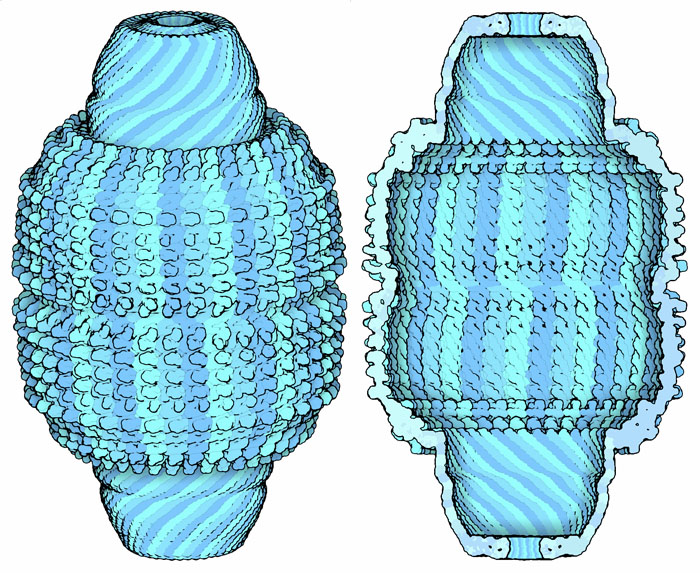Molecule of the Month: Vaults
Cells build huge vault containers constructed of a symmetric arrangement of many subunits

Symmetrical Shells
Mystery of the Vault

Bacterial Microcompartments
Exploring the Structure
Vaults (PDB entries 4V60)

The vault is a huge symmetrical structure composed of 78 identical chains. In this picture, one of the chains is colored white and the others are colored from red to blue from one end of the chain to the other. Part of the protein folds into a string of small domains that together assemble into the wide body at the center. The rest of the protein forms a long alpha helix that assembles into the narrow cap at the ends. To explore this structure in more detail, click on the image for an interactive JSmol.
Topics for Further Discussion
- Like the major vault protein, many proteins fold to form a string of repeated compact domains. Can you find other examples in the PDB?
- Can you find structural similarities between the two bacterial microcompartments shown on the previous page and virus capsids?
Related PDB-101 Resources
- Browse Molecular Infrastructure
References
- W. Berger, E. Steiner, M. Grusch, L. Elbling and M. Micksche (2009) Vaults and the major vault protein: novel roles in signal pathway regulation and immunity. Cellular and Molecular Life Sciences 66, 43-61.
- S. Tanaka, C. A. Kerfeld, M. R. Sawaya, F. Cai, S. Heinhorst, G. C. Cannon and T. O. Yeates (2008) Atomic-level models of the bacterial carboxysome shell. Science 319, 1083-1086
June 2009, David Goodsell
http://doi.org/10.2210/rcsb_pdb/mom_2009_6


